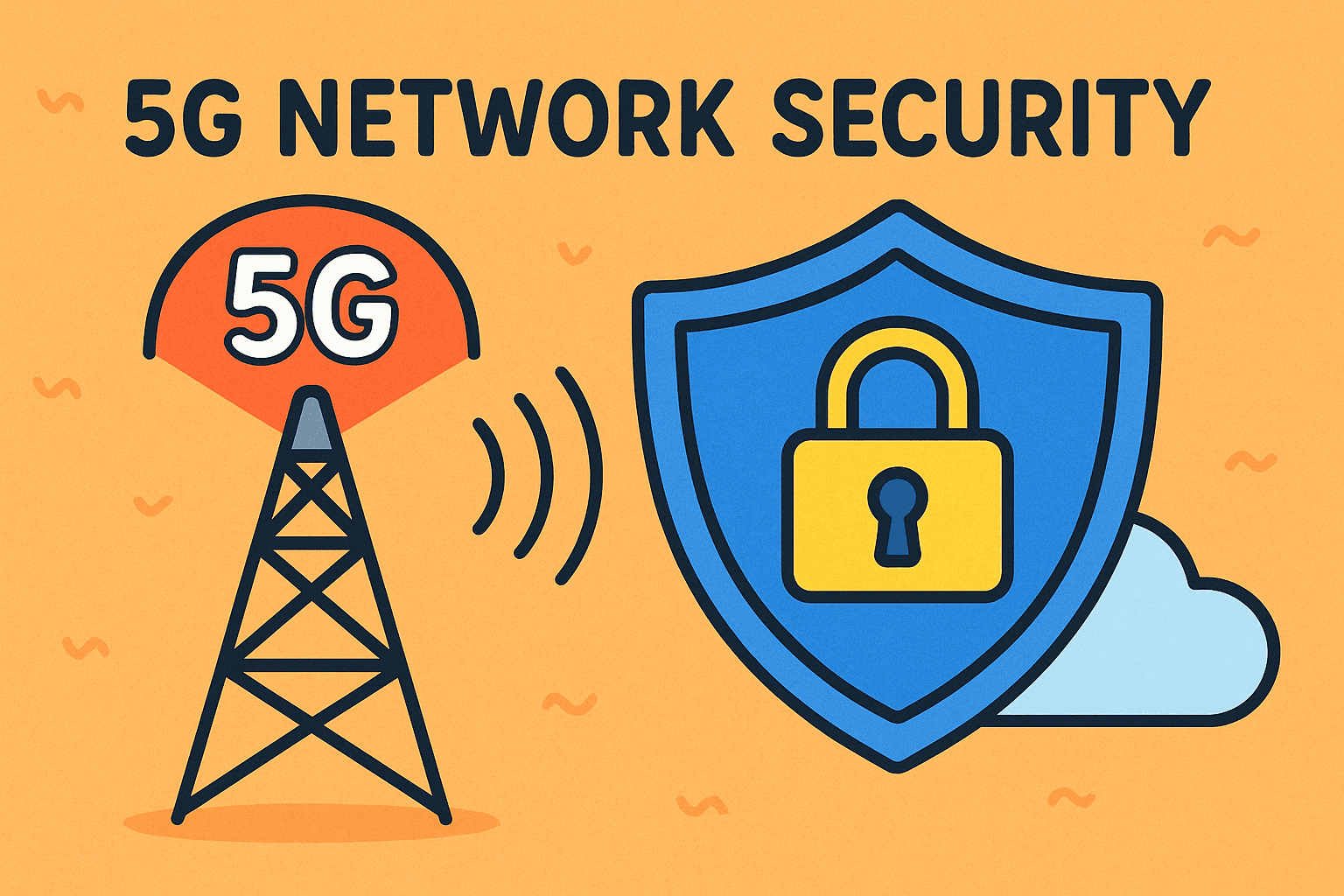Updated on October 21, 2025, by OpenEDR
The rollout of 5G network security measures has become just as important as the technology itself. With 5G promising ultra-fast speeds, low latency, and massive device connectivity, businesses and governments are racing to adopt it. But here’s the challenge: as the network grows, so does the attack surface. According to industry reports, the number of connected IoT devices is expected to exceed 29 billion by 2030, most relying on 5G. Without strong 5G network security, these innovations could turn into vulnerabilities.
In this article, we’ll explore the risks, challenges, and best practices of 5G network security while providing actionable insights for IT managers, CISOs, and executives.
What Makes 5G Different from Previous Generations?
Unlike 3G and 4G, 5G is not just about faster data. It introduces architectural changes that make security more complex.
Software-Defined Networks (SDN): 5G relies heavily on virtualization, making it flexible but also prone to software-based attacks.
Edge Computing: More processing happens at the network edge, closer to devices, which increases exposure.
Massive IoT Adoption: Billions of connected devices expand the attack surface dramatically.
Network Slicing: 5G allows multiple virtual networks on the same infrastructure, but each slice must be independently secured.
These innovations deliver benefits but also create new cyber risks that demand robust 5G security solutions.
Key Threats in 5G Network Security
To design effective defenses, it’s crucial to understand where the dangers lie.
1. Expanded Attack Surface
With billions of IoT devices connected, attackers can exploit weakly secured endpoints, leading to botnets, ransomware, or DDoS attacks.
2. Supply Chain Vulnerabilities
Many 5G components are sourced globally. A single compromised vendor could embed backdoors or malware at the hardware or software level.
3. Virtualization Risks
Since 5G uses cloud-native architectures, flaws in virtual machines or containerized apps could give hackers deep access.
4. Insider Threats
Administrators managing network slices or edge computing platforms may misuse privileges, intentionally or unintentionally.
5. State-Sponsored Attacks
Given 5G’s role in national infrastructure, it’s a target for cyber espionage and sabotage.
Best Practices for 5G Network Security
To safeguard business and critical infrastructure, IT teams must adopt layered defenses.
Strengthen Identity and Access Management (IAM)
Enforce multi-factor authentication (MFA) for all admins.
Implement Zero Trust Security to validate every access request.
Use role-based access control (RBAC) to minimize exposure.
Secure IoT Devices at Scale
Mandate device authentication before joining the network.
Push regular firmware updates to patch vulnerabilities.
Deploy IoT security platforms to monitor anomalies.
Encrypt Data End-to-End
Enforce AES-256 encryption for all data in transit.
Secure APIs with TLS/SSL certificates.
Apply encryption at the edge as well as the core.
Build Resilient Network Slices
Assign dedicated security controls for each slice.
Regularly test slices with penetration testing.
Isolate critical applications from consumer-grade services.
Leverage AI and Automation
Use AI-driven threat detection to spot anomalies in real time.
Automate incident response to contain attacks quickly.
Deploy Security Orchestration, Automation, and Response (SOAR) tools.
Business Implications of Weak 5G Security
Failure to secure 5G environments can lead to devastating consequences:
Financial Losses: Downtime, ransomware payments, and lawsuits can cost millions.
Reputation Damage: A breach erodes trust with customers and stakeholders.
Regulatory Penalties: Non-compliance with GDPR, HIPAA, or CCPA can result in heavy fines.
National Security Threats: Compromised 5G networks could endanger government and defense operations.
For IT managers, prioritizing 5G cybersecurity strategies is no longer optional—it’s a business survival requirement.
Future of 5G Network Security
As adoption grows, AI-driven cybersecurity, blockchain-based identity management, and quantum-safe encryption will play larger roles. Organizations that invest early in 5G security solutions will gain a competitive advantage while minimizing cyber risk.
FAQs on 5G Network Security
1. Why is 5G network security important?
Because 5G connects billions of devices, a single breach can spread faster and wider than ever before, impacting both businesses and governments.
2. What are the biggest security challenges in 5G?
IoT vulnerabilities, virtualization risks, and supply chain threats are among the most critical concerns.
3. How can businesses protect IoT devices in 5G networks?
By enforcing authentication, using endpoint security, and applying regular firmware updates.
4. Is 5G more secure than 4G?
Yes, 5G introduces stronger encryption and security features, but its expanded architecture also creates new risks.
5. What role does Zero Trust play in 5G security?
Zero Trust ensures every device and user is verified before accessing network resources, reducing insider and external threats.
Conclusion
The 5G revolution is reshaping industries, but with innovation comes responsibility. Building robust 5G network security strategies ensures businesses can harness the benefits of next-gen connectivity without exposing themselves to catastrophic cyber risks.
Now is the time to evaluate your organization’s readiness. Don’t wait for a breach—secure your 5G future today.
👉 Get Started with Xcitium’s OpeneEDR Advanced Security Solutions
